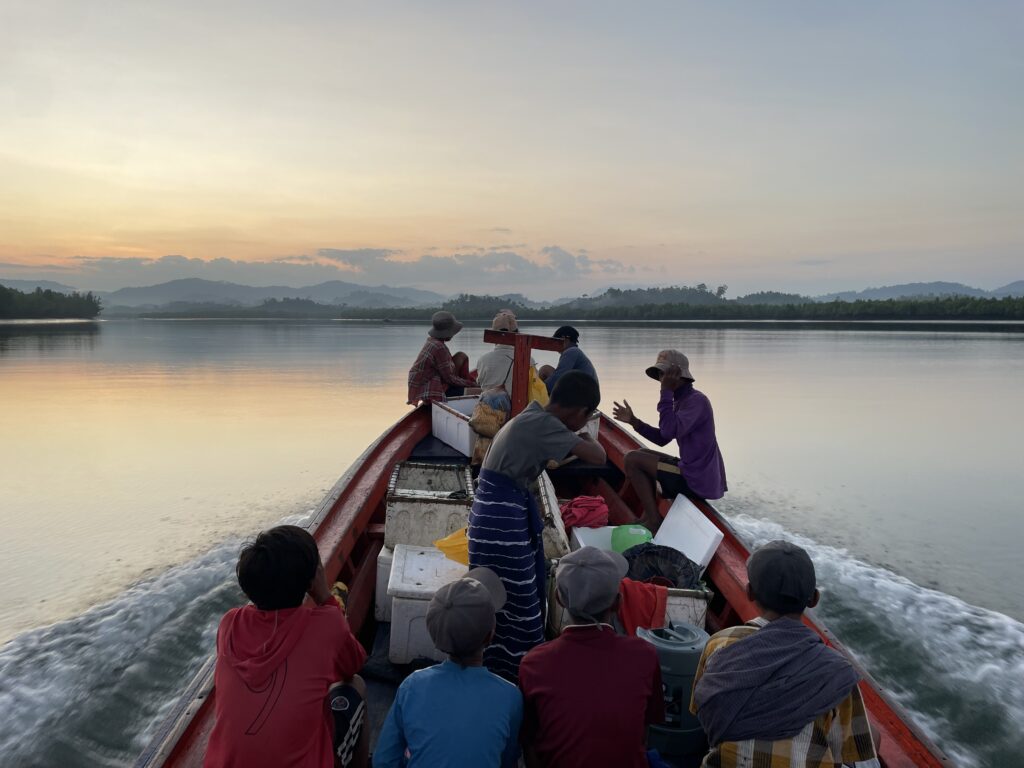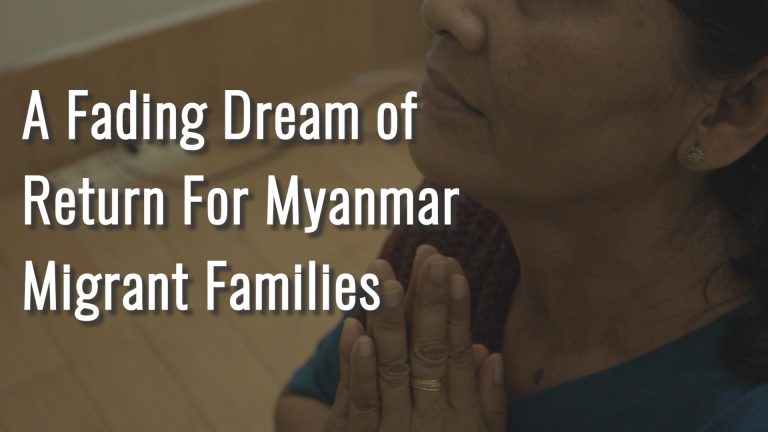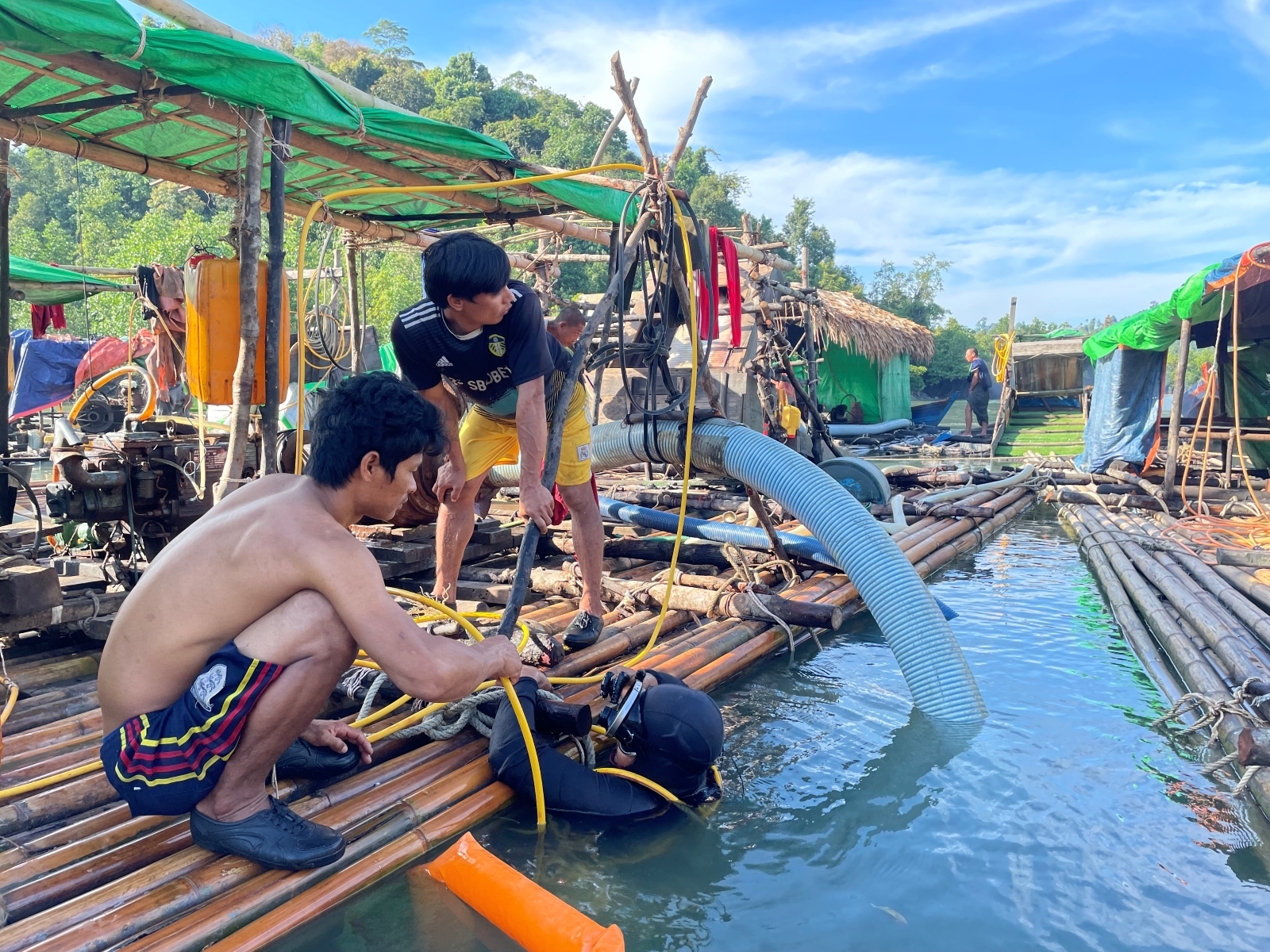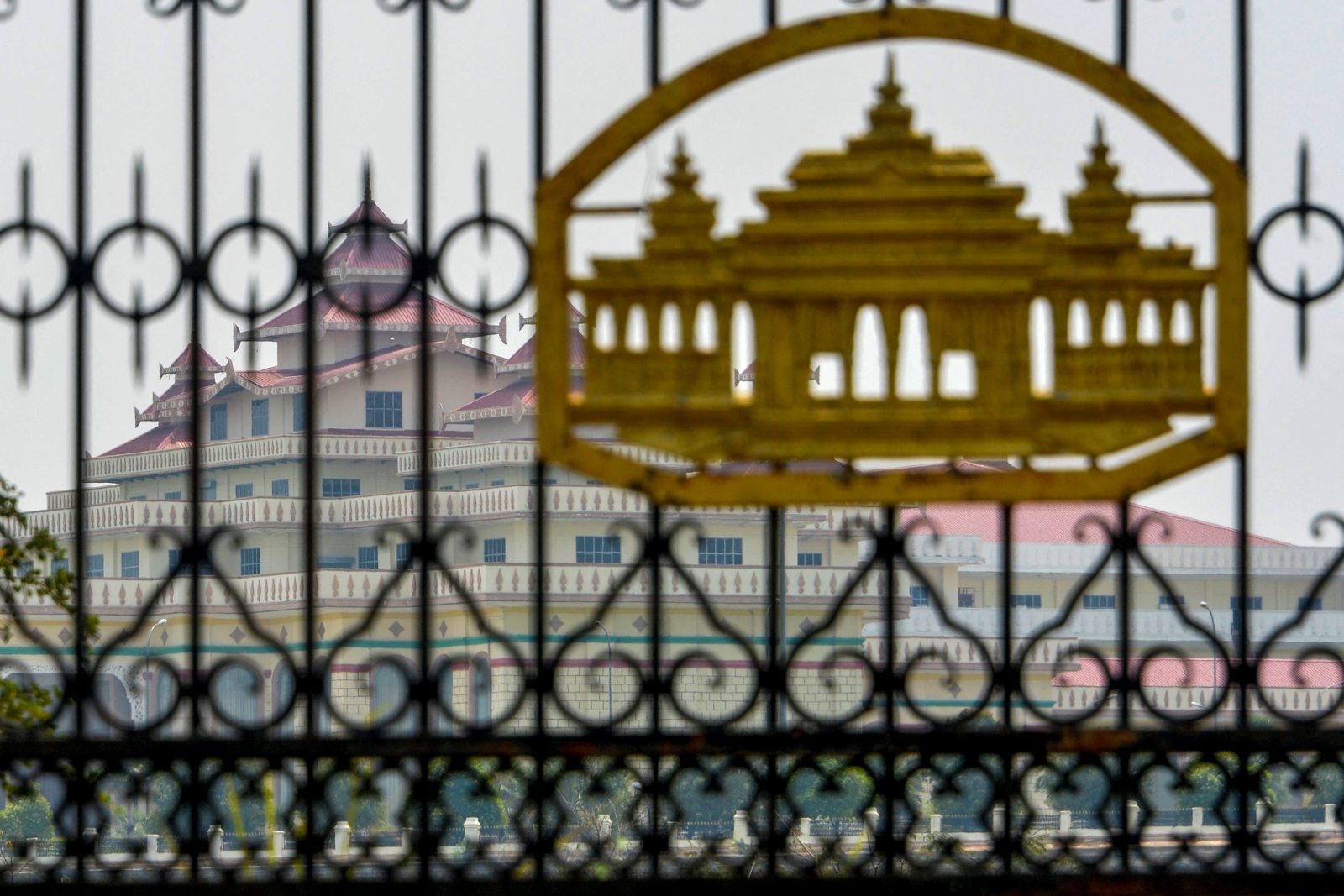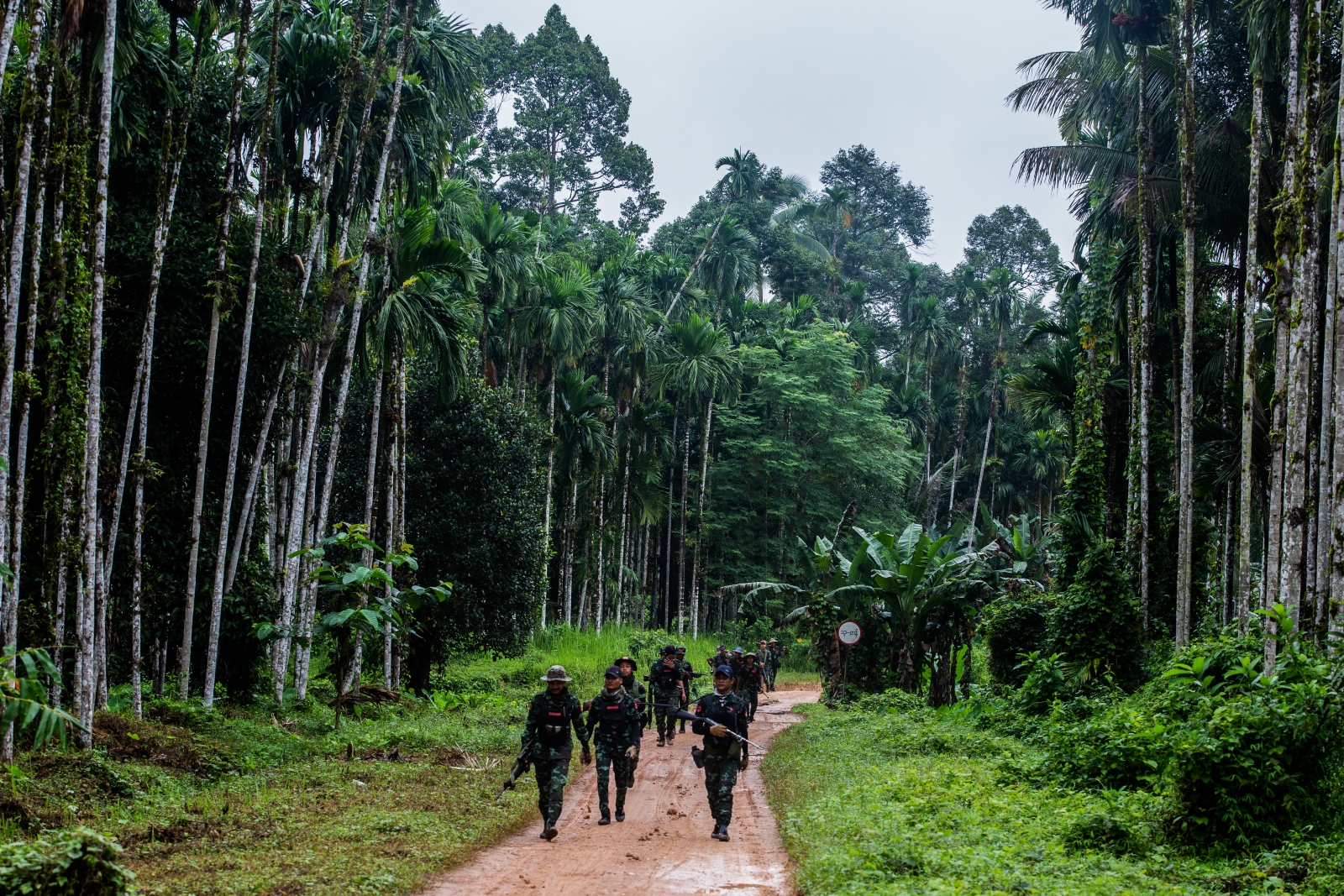The military regime’s tightening of customs checks has boosted seafood smuggling from Tanintharyi Region to Thailand, with the collusion of members of the Myanmar navy.
By MG HTIN | FRONTIER
A small wooden boat races over the Andaman Sea, the 14 people on board wrapped in blankets against the night chill. The driver cuts the engine and shouts to wake up the other passengers as the boat drifts towards a mangrove forest. Two seemingly disembodied LED lights bob in the air as a couple in their early 20s disembark and head into the mangroves, while the driver continues cruising along the coast.
Most of the other workers are boys and girls aged 10 to 15, who wake up one by one as the driver drops them at different points on the shore. By dawn, all of them can be seen wading in the shallow waters that lap against the mangroves. They search for mantis shrimps and blood clams, using plastic foam boxes to collect their catch.
Rather than an exact time schedule, the job follows the ebbs and flows of the tide off the coast of Bokpyin Township, in Myanmar’s southernmost Tanintharyi Region. Some days, they start as early as 1am. When Frontier visited the site in December last year, high tide announced the end of the work day at around 10am. The helmsman returned to shuttle the workers to their villages, where they sell their fishery products to local wholesalers.
Each worker makes between K5,000 and K25,000 per day – although during the rainy season from June to September, when shellfish are even more plentiful, they can make up to K100,000 (US$30 at the market exchange rate). The workers say the overhead is cheap – the reusable foam boxes only cost about K40,000 and some even pay for them in instalments. Drivers are hired by the wholesalers, and often supplement their income by joining the scavengers on shore.
But the ease of entering this profession, and the promising income opportunities, contribute to the involvement of children seeking to support their families.
“I want to go to school, but that would mean fewer people working in the family. My dad, brother and I are all supporting our relatives,” said a local 15-year-old who discontinued his studies at Grade 7. The fourth of nine children, he helps pay the schooling and living costs of his five younger siblings.
Local fishers and shellfish gatherers mostly sell their products for export to Thailand, via wholesale traders who are present in even the smallest villages on the Tanintharyi coast. Popular products include white mantis shrimps, lobsters, blood clams and horseshoe crabs.
The traders typically export a minimum of 50 kilogrammes of seafood per week to Thailand, according to a 33-year-old wholesaler in Bokpyin. But during the rainy season they often export more than 250kg a week.
“I send all the products via boat to Thailand,” she said.

Customs gets tough
The mountainous land crossings of Htee Khee and Maw Taung are used for exporting seafood caught further north in Tanintharyi. The catch in Bokpyin, however, reaches Thailand via the port town of Kawthaung, at Myanmar’s southern tip, from where boats cross the Kraburi River estuary to the Thai port of Ranong.
Traders plying this route used to benefit from corrupt dealings with the authorities in Kawthaung that saved them plenty of tax revenue and allowed them to skirt fishery laws. Since the military coup in 2021, however, customs and other regulatory inspections have tightened, in an apparent bid by the cash-strapped regime to claw back revenue. This has prompted a surge in smuggling – undoing what local merchants describe as the gradual regularisation of trade under the civilian government in the years before the coup.
U Aung, who has run cargo boats to Thailand for more than two decades, says that before the military seized power, “there was a mutual understanding” between the boat operators and Kawthaung authorities when it came to taxing goods for export. “The fishery and customs departments did not scrutinise thoroughly. But with military officers now involved in the fishery department, the procedures have become extremely strict,” he told Frontier.
U Aung explained that, previously, traders would declare only about a third of their actual cargo. Rather than checking the goods, customs officers would feign to take the traders at their word and tax them accordingly – but with a little extra added to the amount, which they would pocket as a bribe. But since the coup, officials have increasingly stepped onto the boats to carefully tally the crates and tanks of seafood.
“Nowadays, they scrutinise more closely, and the taxes have increased,” agreed a person close to the Department of Fisheries, speaking to Frontier on condition of anonymity.
U Yan Naing, a cuttlefish trader in Kawthaung, said, “before the coup, the total cost of exporting 500 cuttlefish crates was around 20,000 baht (K2 million, or $560) at most, but it’s since increased to 60,000 baht.”
“Now, almost all the products on the boats are taxed, so it’s not profitable anymore,” he said.
In addition, the junta’s efforts to conserve its dwindling foreign currency reserves have effectively levied an extra tax on exports. In April 2022, it announced that all foreign currency coming in from abroad must be exchanged for kyats within 24 hours. Combined with a fixed exchange rate that greatly overvalues the kyat, this policy imposed steep losses on exporters earning foreign income. While the regime has since allowed increasingly large proportions of this income to be exempted – currently at 50 percent – exporters are still losing out.
The cumulative effect of these unpopular measures is seen in the official trade figures at Kawthaung. Total exports have slid from about 27 million a month in 2021 to only around 12 million a month between April and November last year.

God of the sea
By tightening tax measures, the junta has made smuggling a relatively cheap and hassle-free option for seafood traders in Tanintharyi. It also comes with comparatively few risks – thanks to the collusion of “the god of the sea”.
A Tanintharyi parliamentarian from the National League for Democracy used this term to refer to the Myanmar navy and the largely unchecked power it wields along the coast. Joining a debate at the upper house of the parliament in 2019 over amendments to the Marine Fisheries Law, the MP said, “Myanmar’s seas are not owned by the fishers but by the god of the sea”. Local seafood traders told Frontier that the resulting media attention prompted a decline in corruption by the navy, but this has ramped back up following the coup.
Traders seeking to skip customs in Kawthaung pay off this branch of the military in a number of ways. Money can be conveyed via agents in advance of smuggling runs, but unmarked navy speed boats have also set up at least 14 checkpoints along the illegal sea route that stretches all the way from Myeik, a major port further north on the Tanintharyi coast, to Ranong, meaning Kawthaung can be bypassed.
These marine checkpoints also impose fees of about K100,000 on boats trading legally, but charge smuggling vessels a higher rate of between K150,000 and K200,000. U Aung said these sums were up from about K50,000 for legal and K100,000 for illegal boats before the coup but were still less than official customs duties.
“I openly tell them I’m going illegally if they ask me at a checkpoint,” he said. “They actually prefer smuggling boats since it’s easier for them to ask for money. We don’t worry about getting arrested by the navy because they’re mostly interested in collecting bribes.”
U Aung added that naval forces stationed at a pearl farm off Kawthaung allow smugglers to pass through the area for a monthly fee of K30,000, although they still have to pay extra if they encounter navy ships on patrol – often in the form of around eight gallons of petrol.
Most of the petrol used by trading boats is smuggled from Thailand to Kawthaung, in an example of how illicit trade goes both ways. When Frontier rode on one of the smuggling boats in December, it stopped in Kawthaung to buy barrels of illegally sourced Thai petrol.
While other parts of Myanmar have experienced fuel shortages linked to the shortage of foreign currency since the coup, southern Tanintharyi has been spared thanks to this black market, though petrol prices continue to rise.
Besides seafood, another valuable commodity being smuggled to Thailand is people, amid a surge in labour migration from Myanmar due to conflict and financial hardship. A driver who transports migrants said at least five vehicles carrying 10-15 people cross the border illegally each day at villages north of Kawthaung town on the Kraburi River.
Frontier observed 15 migrants in a van stopping at a military checkpoint on the highway between Bokpyin and Kawthaung, the driver disclosing the number of passengers and paying bribes.
The trade in people is lucrative and involves a chain of brokers that stretches from the migrants’ home villages to their eventual workplace in Thailand. The driver interviewed by Frontier said they pay up to K4 million for the full service.

Laundering dirty seafood
The smuggling boom, combined with limited armed conflict compared to elsewhere in Myanmar, has shielded big seafood traders from the economic downturn that has wracked most of the country since the coup. “We can still work peacefully,” U Aung said, adding that in the port of Myeik, “there used to be 10 legal cargo boats but there’s not a single one now. They all work illegally with the navy.”
But while the navy colludes with businesspeople, they frequently harass the poor villagers who harvest the seafood to begin with. “They [naval forces] come to our village sometimes. They detain and fine those who catch restricted fishery products,” said one resident of a coastal village in Bokpyin, adding that navy officers often enjoy a close relationship with local administrators appointed by the junta. Restricted items include ball sea cucumbers, locally called “water balls”, that are routinely smuggled to Thailand where they are prized as food.
Moreover, the abundance of smuggled seafood has depressed the income of these villagers, even as traders have earned large amounts. “When products are plentiful, the price drops and there is not much profit,” said another resident of coastal Bokypyin who has caught cuttlefish for more than three decades.
However, traders of smuggled goods from Myanmar can’t avoid all taxes. Once in Ranong, they pay fees to Thai customs and the port authority. Ko Too Too, a 45-year-old who has been working at the Ranong fish auction centre for 30 years, said the combined cost was around 1,000 baht per boat. In addition, Thai immigration issues each member of the boat crew a seven-day pass for Ranong and the surrounding district.
But despite following these official procedures, smuggling boats are careful to avoid the Thai Department of Fisheries. The department conducts patrols looking for Myanmar seafood imports that don’t have a catch certificate, which proves that the seafood was caught and conveyed lawfully. The Thai government imposed this requirement after the European Union threatened in 2015 to ban seafood products from Thailand, many of which are originally sourced in Myanmar, due to rampant illegal fishing and labour rights abuses.
“If they encounter the Thai fishery department, the crew risk arrest, seizure of the boat and cargo and even imprisonment,” the cuttlefish trader Yan Naing said of smugglers from Myanmar. Seized boats and cargo are then auctioned off by the Thai government, he said.
Smuggling boats typically dock in Ranong at night to avoid detection by the department, having paid the customs and port fees remotely via an agent. The goods are then offloaded into warehouses under the cover of darkness and mixed with legally sourced seafood before the town’s fish auction centre opens at 7am.
Yan Naing said this comes with risks for the warehouses. “If the fishery department finds out, they take action against them. But although some warehouses don’t accept products from illegal boats, most do,” he said.
Traders who buy seafood at the auction have two options for resale. They can either take the goods to markets in Bangkok or elsewhere where they don’t need catch certificates, or sell them to export factories. While these factories do ask for the certificates, the prior mixing of illegal with legally sourced seafood effectively certifies the former.
“In Thailand, they’ll buy everything,” said Too Too.


